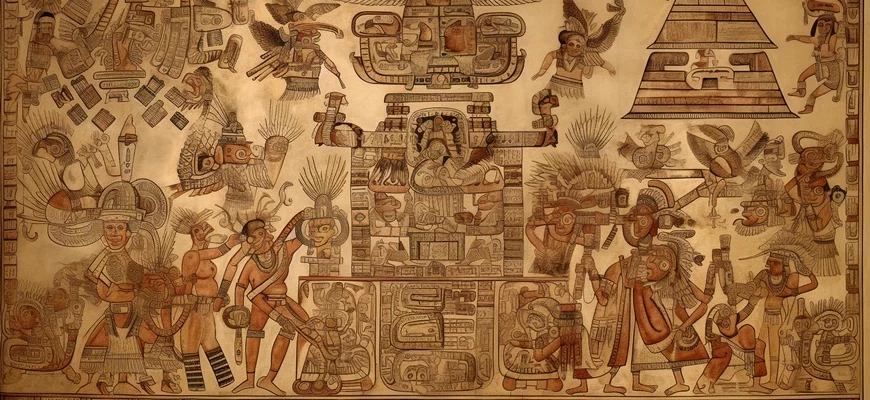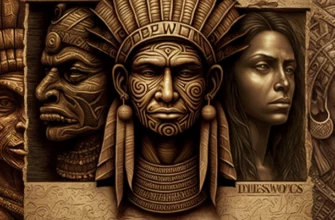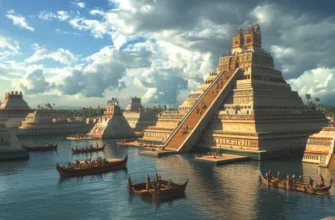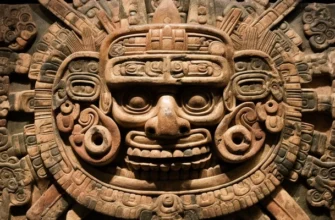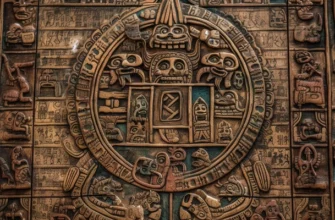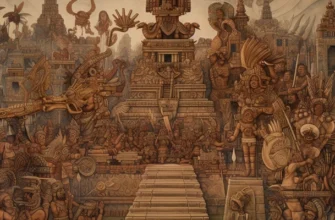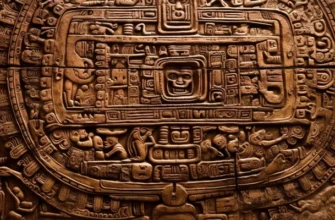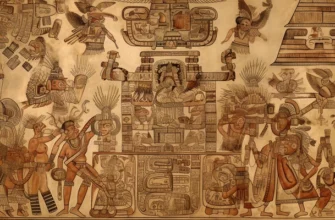The Aztecs were one of the largest empires in Mexican history. Their way of life was quite complex and depended on many factors, including geographical location, climatic conditions, and social structure.
The Aztecs lived in Mexico more than 500 years ago, in the 15th and 16th centuries. They lived in rich and prosperous cities such as Tenochtitlan, Tlaxcala, and Cholula. Agriculture was their main source of livelihood, as they grew crops such as corn, beans, tomatoes, pumpkins, and watermelons.
The main crafts of the Aztecs were ceramics, weaving, gold and silver, and jewelry. They made various items such as dishes, belts, shoes, hats, and other items for everyday use.
Aztec society had a strict hierarchical structure. At the top of the pyramid was the emperor, who had absolute power over the country. On the second level were the military leaders, and on the third were the priests and scholars. The lowest level belonged to slaves and prisoners, who performed the dirtiest and most dangerous jobs.
The Aztecs had a developed religion and culture. They believed in polytheism, where every more or less known object could be a god. They performed various religious rituals, including sacrifices, which were often associated with wars and conquests.
One of the defining elements of Aztec culture was their artistic and literary heritage. They created complex symbolic drawings and engravings that conveyed religious and cultural images and reflected the history of the empire. In addition, they developed their own writing system based on glyphs and pictograms.
The Aztecs were also known for their military power and technology. They developed special combat techniques, such as the use of arrows and throwing weapons, and knew how to build complex defensive structures, such as fortresses and walls.
Overall, the Aztec way of life was quite complex and diverse. They were an advanced civilization with their own culture, religion, and social structure. But they were also known for their cruel religious rituals and conquests of other peoples, which were often accompanied by mass sacrifices.
Food
The Aztecs’ diet was varied and consisted of a large number of foods. The main foods were corn, beans, amaranth, and local vegetables and fruits such as avocados, tomatoes, and beans.
In addition, they consumed meat, mainly turkey and rabbit, as well as wild animals that they hunted in the forests. Fish was also a significant source of protein, especially on the coast.
The Aztecs also grew turmeric and other spices to add flavor to their food, and used hot peppers to help keep food from spoiling quickly in the hot climate.
The Aztec diet included a lot of carbohydrates and protein, but was quite low in fat and vitamins, which led to diseases such as scurvy and chestnut disease. However, they were quite skilled at producing food and knew how to store it for long periods of time so that they would have reserves during times of famine or war.
Culture and art
The culture and art of the Aztecs were extremely rich and developed. They created their own writing system based on glyphs and pictograms, which they used to record their history, myths, and religious rituals.
The Aztecs developed their own architecture and were famous for their huge pyramids and temples, which were decorated with symbolic drawings and engravings. They were also known for their artistic crafts, such as ceramics, textiles, and stone carvings.
One of the most famous Aztec artifacts is the Sun Stone, a huge disc with a diameter of over 3 meters, which reflects the cosmological concept of the Aztecs and their gods.
In addition, the Aztecs are known for their music and dance. They used a variety of instruments, such as drums, flutes, and metal gongs, and performed various musical and dance performances that were associated with religious and cultural rituals.
However, it is worth noting that some of the Aztecs’ religious rituals and customs were quite brutal, including sacrifices that often involved cutting open the chest and removing organs from living people. Such practices were usually carried out as part of religious rituals associated with gods who demanded human sacrifices.
Clothing and jewelry
Clothing and jewelry were an important part of Aztec culture. They used various materials to make clothing, such as cotton, agave, and silk. Men usually wore simple clothes consisting of ties and pants, while military men wore outfits made of feathers and leather. Women wore longer dresses that were decorated with embroidery and various ornaments.
The Aztecs were also known for their jewelry, including beads, earrings, and bracelets. Their jewelry was made from various materials, including gold, silver, pearls, and stones. Jewelry usually had religious or symbolic meanings and was used to reflect the status and wealth of the owner.
Clothing and jewelry were also an important part of religious rituals and ceremonies. For example, priests wore special clothing and jewelry that symbolized their religious dedication and authority. Important events such as births, weddings, and funerals were also accompanied by the selection of appropriate clothing and jewelry. H3: Sports and Games
Popular Sports and Games
The Aztecs are known for their interest in sports and games. Their culture had many different sports that served not only entertainment but also religious and social functions.
One of the most famous sporting events in Aztec culture was ball tournaments. This game, called “tlacatl,” took place on large, specially equipped courts. Players had to use their elbows, knees, and hips to throw and hit a heavy rubber ball. The game was very popular among the Aztecs and was associated with mythology and religion.
Other popular sports were boxing and wrestling. Boxing among the Aztecs had its own peculiarities—players used boxing gloves that were made of hard material and had sharp edges. Wrestling was also popular, and it was associated with religion and military training.
In addition to sporting events, there were many games in Aztec culture. For example, the game “patolli” was a board game that required players to have strategy and problem-solving skills. “Tepopulis” was a game played on a special board using corn kernels as chips.
All of these sports and games were of great importance in Aztec culture and served not only entertainment but also social and religious functions.
Consequences of the arrival of the Spanish
The reasons for the arrival of the Spanish in Mexico were varied. One of the main reasons was the desire to acquire wealth, particularly gold and silver. The Spanish also wanted to spread Christianity among the local population, establish control over new territories, and expand their colonial possessions.
When the Spanish arrived in Aztec territory, their king, Montezuma II, greeted them with witty words and gifts, but this did not prevent the Spanish from capturing Mexico City in 1521. One of the main reasons for the defeat of the Aztecs was the inequality in weapons: the Spaniards were better armed and had more horses, which allowed them to easily defeat the local population.
The consequences of the arrival of the Spaniards for the Aztecs and their culture were very severe. By conquering new lands, the Spaniards gained control over the entire territory of Mexico, establishing their regime and economic relations. Part of the local population was destroyed, dying from diseases brought by the Spaniards.
The Spanish also attempted to destroy Aztec culture by banning local religious rituals and removing many artifacts that were of great historical significance to the local population. Spanish linguistic and cultural influence was established, leading to a change in the linguistic and cultural identity of the local population.
Despite all these consequences, Aztec culture and traditions survived, and some of them have survived to this day. In particular, the Aztecs left us many of their works of art, such as paintings, sculptures, and architecture. Archaeological finds testify to the high level of development of the Aztecs in the field of culture and art.
Also, some Aztec words and phrases have remained in the Mexican language, which shows the influence of this culture on modern Mexican identity.
The arrival of the Spanish in Mexico was an important historical event that significantly influenced the fate of the Aztecs and their culture. This period in Mexican history marked a change in the country’s political, economic, and cultural ties with other countries around the world.
Conclusion
In conclusion, the Aztecs were a rather complex and developed civilization that lived in Mexico for over 600 years. They had their own political system, military tactics, religion, and culture. The Aztecs were also a highly developed people in the fields of agriculture and medicine.
On the one hand, the Aztecs had long practiced human sacrifice and military campaigns, which may cause concern and condemnation in the modern world. But on the other hand, they developed within a complex social and cultural system that included many interesting aspects.
Overall, the Aztecs’ way of life was quite unique and complex, and their traditions, art, and culture left a significant mark on the history of Mexico and the world as a whole.
